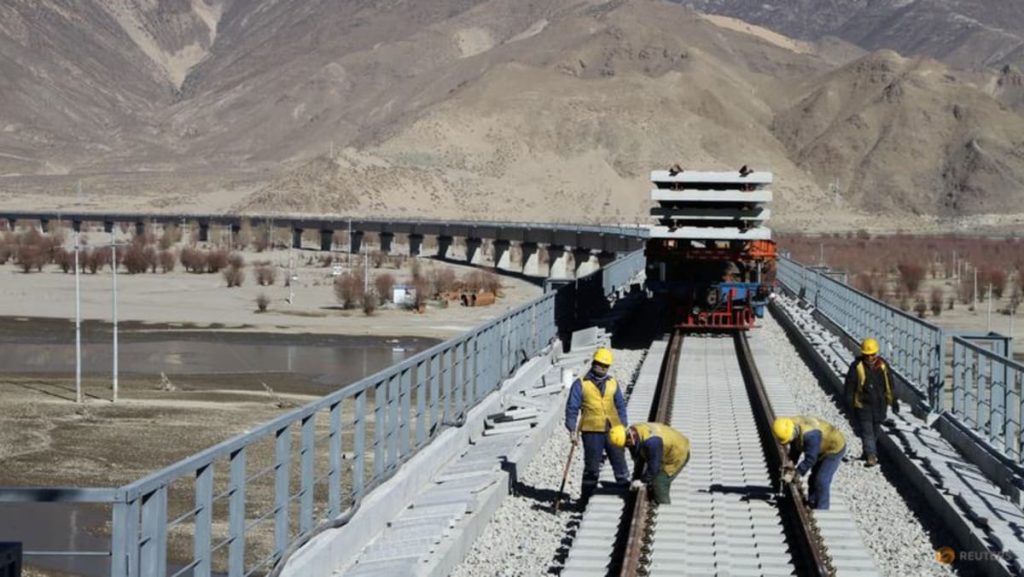The recent announcement by China regarding the construction of a mega-dam on the Yarlung Tsangpo River, known as the Brahmaputra in India, has raised concerns in New Delhi, prompting the Indian government to reiterate its position on the potential implications of such projects for downstream nations. This proposed dam, projected to surpass even the monumental Three Gorges Dam in size, is positioned in the Tibetan region of the river, upstream from India and Bangladesh, and has the potential to significantly impact the lives and livelihoods of millions residing in these downstream countries. The Xinhua news agency report, which linked the project to China’s carbon neutrality goals and economic development plans for Tibet, has triggered renewed discussions about water security and transboundary river management in the region.
India’s immediate response underscores the delicate geopolitical dynamics surrounding shared water resources and highlights the existing tensions between the two nations. The Indian foreign ministry, through its spokesperson, Randhir Jaiswal, has publicly expressed concerns and urged China to ensure that the interests of downstream countries are not compromised by upstream activities, specifically referencing the potential impact on the Brahmaputra River. This public statement serves as a formal communication of India’s unease and underscores the potential for the dam project to exacerbate existing tensions between the two nations, particularly given the ongoing border disputes and strategic competition in the region.
The core of India’s concern lies in the potential disruption of the Brahmaputra’s flow, a river crucial for agriculture, industry, and the sustenance of millions in northeastern India and Bangladesh. Changes in water volume, flow patterns, and sediment load can have cascading effects on downstream ecosystems, affecting irrigation, drinking water supplies, and the delicate ecological balance of the region. Moreover, the potential for increased flooding or, conversely, reduced water availability during dry seasons poses a significant threat to food security and economic stability. India’s emphasis on established water rights underscores its claim to a share of the Brahmaputra’s waters and highlights the legal and historical dimensions of the issue.
India’s call for “transparency and consultations” reflects the broader principles of international water law and the importance of cooperation in managing shared water resources. The United Nations Convention on the Law of Non-Navigational Uses of International Watercourses emphasizes equitable and reasonable utilization, the obligation not to cause significant harm, and the need for prior notification and consultation regarding planned measures. India’s invocation of these principles underscores the importance of dialogue and cooperation between riparian states to address potential conflicts and ensure sustainable water management. The absence of such consultations can lead to mistrust, escalate tensions, and hinder the development of mutually beneficial solutions.
The Brahmaputra River, originating in the Tibetan Plateau, traverses a complex geopolitical landscape before reaching the Bay of Bengal. Its flow through multiple countries highlights the interconnectedness of water resources and the need for collaborative management. China’s increasing focus on hydropower development, while contributing to its renewable energy goals, raises concerns about the potential downstream consequences, particularly in the context of limited data sharing and consultation. The lack of a comprehensive water-sharing agreement between China and downstream countries further complicates the situation and underscores the need for a robust legal framework to govern transboundary water management.
India’s response to the proposed dam project highlights the broader challenges of managing shared water resources in a region marked by geopolitical complexities and increasing demand for water. The Brahmaputra, a lifeline for millions, stands as a case study for the need for international cooperation, transparency, and equitable utilization of transboundary rivers. The future of the Brahmaputra and the well-being of the communities that depend on it hinge on the ability of riparian states to engage in constructive dialogue, establish mutually acceptable agreements, and prioritize sustainable water management practices. The potential for conflict underscores the urgency of addressing these challenges and finding collaborative solutions to ensure the long-term health of the river and the prosperity of the region.

